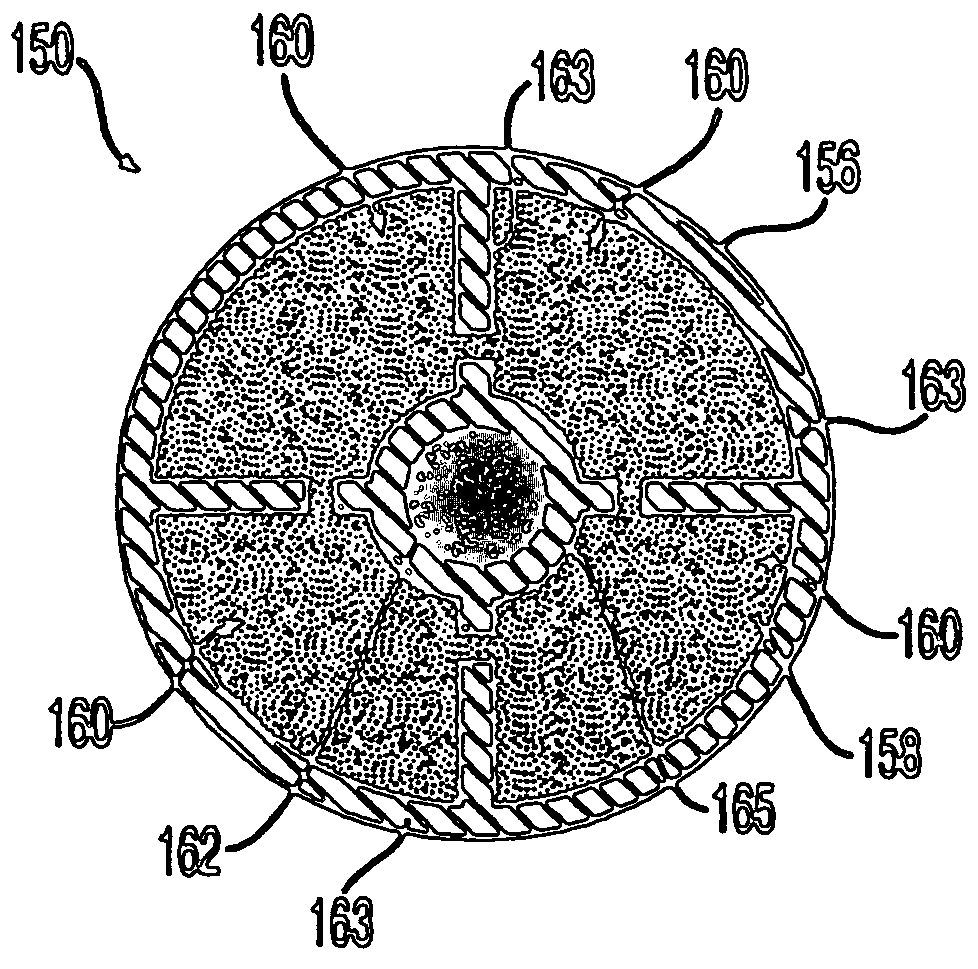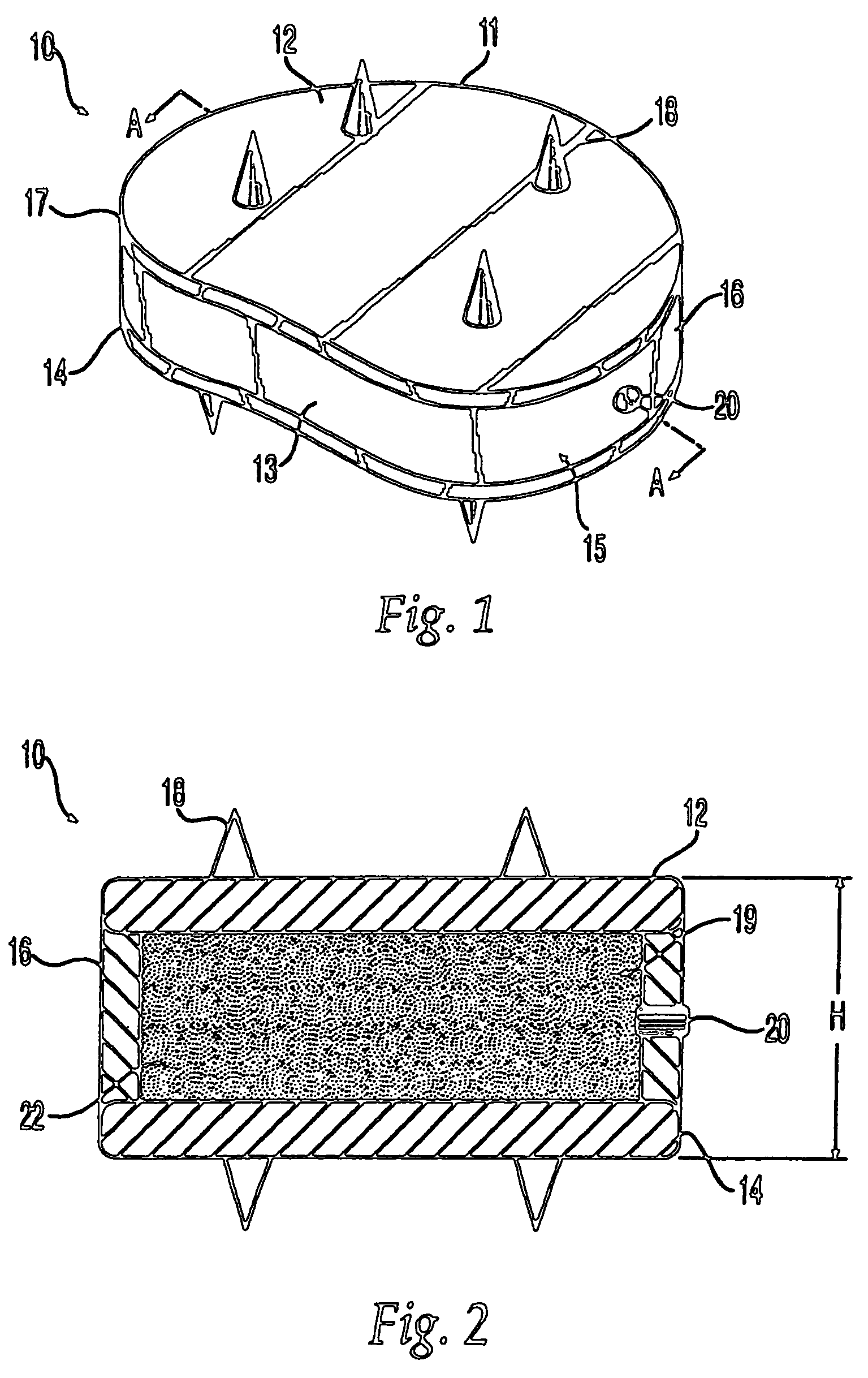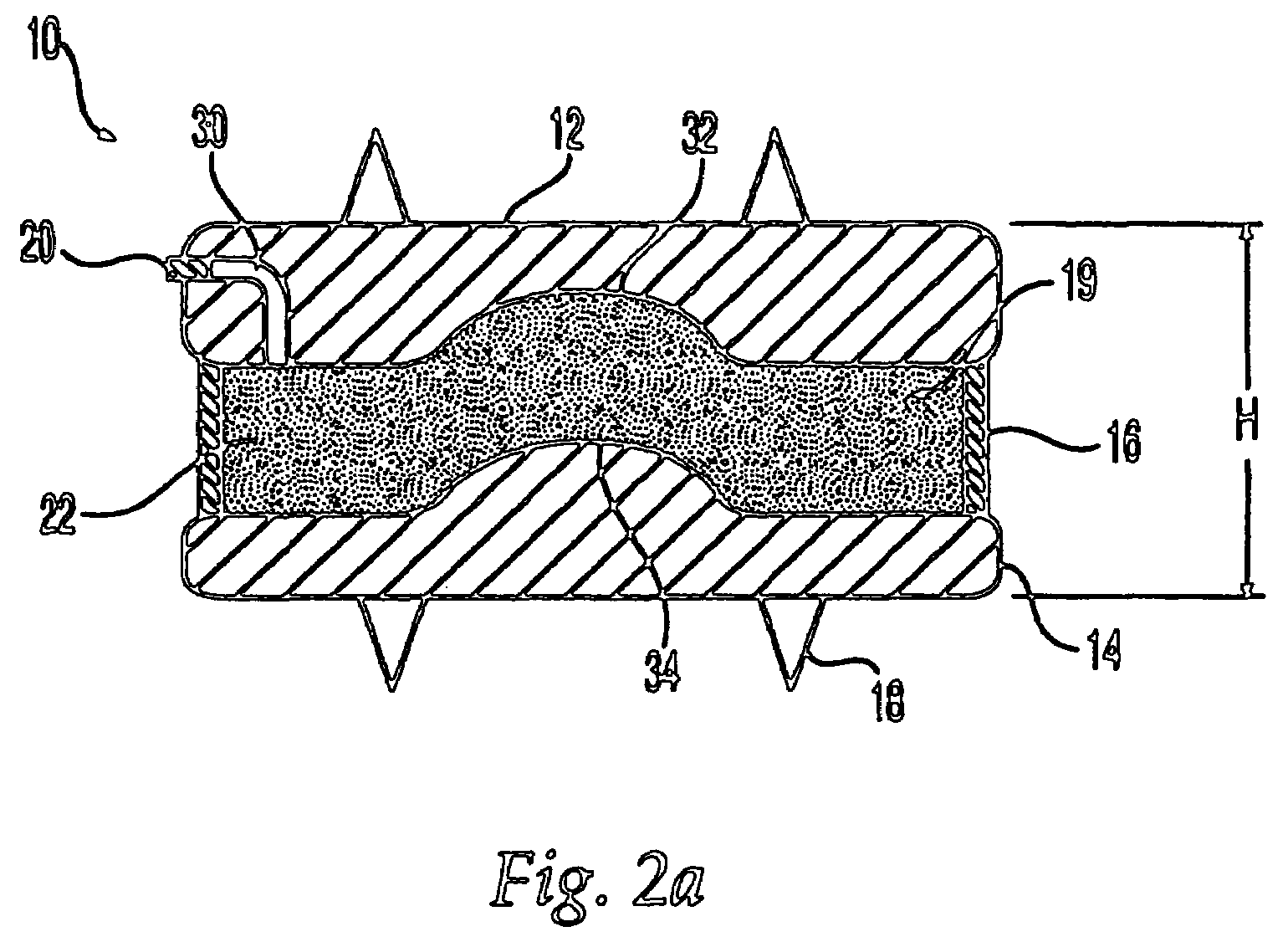Intervertebral disc implant
a technology of intervertebral discs and implants, which is applied in the field of intervertebral disc replacement, can solve the problems of destabilization of the functional spinal unit, reduced physiologic range of motion, severe discomfort, etc., and achieves the effects of reducing particle generation, minimizing wear, and reducing pain
- Summary
- Abstract
- Description
- Claims
- Application Information
AI Technical Summary
Benefits of technology
Problems solved by technology
Method used
Image
Examples
Embodiment Construction
[0049]Any of a wide variety of different implant structures can be prepared according to the teachings shown by the illustrative examples of the intervertebral discs disclosed herein. The intervertebral discs of the present invention are preferably designed to store spinal lordosis, disc height, to allow for a natural range of motion, absorb shock and to provide resistance to motion and axial compression.
[0050]The intervertebral discs preferably are sized and adapted for use in the cervical, thoracic, and lumbar regions of the spine. Also, the intervertebral discs can be tailored for each individual patient allowing for disc characteristics appropriate for the individual patient. For example, the core of the disc can include different assemblies, different components, and / or various types of materials to create the desired characteristics for each individual patient.
[0051]Furthermore, the intervertebral discs may allow flexion, extension, lateral banding, rotation, and translation. ...
PUM
| Property | Measurement | Unit |
|---|---|---|
| height | aaaaa | aaaaa |
| volume | aaaaa | aaaaa |
| stiffness | aaaaa | aaaaa |
Abstract
Description
Claims
Application Information
 Login to View More
Login to View More - R&D
- Intellectual Property
- Life Sciences
- Materials
- Tech Scout
- Unparalleled Data Quality
- Higher Quality Content
- 60% Fewer Hallucinations
Browse by: Latest US Patents, China's latest patents, Technical Efficacy Thesaurus, Application Domain, Technology Topic, Popular Technical Reports.
© 2025 PatSnap. All rights reserved.Legal|Privacy policy|Modern Slavery Act Transparency Statement|Sitemap|About US| Contact US: help@patsnap.com



